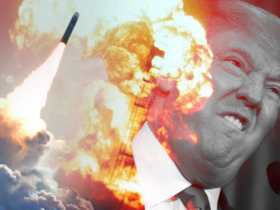During the first months of this year, a series of news began to circulate that reported a critical situation within the United States armed forces. Likewise, serious difficulties were exposed for the military industry to meet the needs of the most powerful war apparatus on the planet. It was extremely surprising that most of the information comes from military sources that have not spared in publicizing a scenario that, in strategic terms, appears extremely complex for Washington.
We will examine this in two parts: The first presents a diagnosis of the United States armed forces based on the statements of their own spokespersons. Next week, in the second part, we will present some opinions from political leaders and institutions, as well as think tanks and media linked to the Military Industrial Complex. Everyone will be able to draw their own conclusions regarding the distance between reality (exposed by the military) and desires (almost always expressed by politicians). This dichotomy has been particularly visible in the analysis of the events of the last two years in Ukraine and to some extent, also in Palestine.
On February 21, United States Secretary of the Navy, Carlos del Toro, in a conference at the National Press Club, stated that the Chinese Navy had significant advantages over the United States, including a larger fleet and shipyards with greater capacity.
Del Toro believes that the United States should modernize and expand its fleet to confront China, which “intends to end American dominance in the world’s oceans.” Likewise, he revealed that the Asian country has about 340 ships and is advancing toward a fleet of 440 by 2030. Meanwhile, the US Navy has fewer than 300.
For this reason, he implored the growth of his country’s Navy, that is, to build a more modern fleet in order to be able to face the “Chinese threat.” But the key fact is that he assured that American naval shipyards “cannot compete with the Chinese” and added that the reality was that China had 13 shipyards, with only one of them having bigger capacity than all the American shipyards combined.
Trying to explain this situation, del Toro alluded to a series of arguments refuted mostly by analysts from the United States itself. One of them, Blake Herzinger, a researcher and expert on defense policy in the Indo-Pacific at the American Business Institute, said that it is customary for US officials to blame China for their frustrations. Herzinger argued: “This seems unfortunately common, [that is] for Navy leadership to throw stones at real or imagined defects in Chinese shipbuilding instead of taking into account the United States’ failures over two decades to conceptualize, design and build ships for its own Navy”.
Just a few days later, on February 28, a report prepared by several agencies reported that the US Armed Forces were facing a personnel shortage, which exposed the possibility of abandoning the current voluntary recruitment system.
Both the Army, the Navy and the Air Force showed that in 2022 they had the worst recruiting result since 1973 when they completely changed from the traditional recruiting service to that of a contracted or “voluntary” Army. After a notable decline from more than two million recruits in 1990 to 1.4 million in 2001, attempts have been made to keep the total number at a stable level.
The report indicates that the same is happening with the reservists. Among the causes of this situation is the population’s loss of confidence in the ability of the armed forces to fulfill their missions. In this sense, a study by the Ronald Reagan Institute carried out in 2021 indicates that only 45% of the US population trusts the Armed Forces, which is 25% less than in 2018.
But there are other factors, including that US authorities are not addressing the most important problems. Likewise, it is argued that recruitment based exclusively on contracts has not provided a solution to the problem. There is no possible solution to the crisis in the short term, which generates concern among senior military leaders, since the Pentagon is not ready to reduce the number of troops. For the armed institution, it has been very difficult to verify that 50 years after the abandonment of the conscription system, those in favor of its return have received a very weighty argument.
In the same dynamic, Bloomberg – citing a brief that Air Force Lieutenant General Michael Schmidt prepared for the hearing held on March 29 in the air subcommittee of the Armed Forces Committee of the House of Representatives – reported that only half of the US fleet of F-35 Lightning II fifth-generation multirole fighters is considered suitable for combat missions. The situation is serious when we are talking about the most modern fighter of the United States Air Force introduced into service only in 2015.
The report reveals that during the month of February of this year “the monthly average of the combat capability of the 540 F-35s in service was only 53.1%, well below the goal of 65%,” which is a clear manifestation that these aircraft cannot carry out all the combative missions they are ordered to, limiting themselves in many cases to exhibition flights, tests and training. Likewise, General Schmidt, without informing about the causes, made it known that only less than 30% of those aircraft were available to carry out the missions.
However, it has been known that there is a continued lack of spare parts for the permanent failures in the F 35 engines, which forces the aircraft to spend long periods in the workshops, affecting the combative capacity of the armed forces.
Reaffirming the complicated situation of the United States military institution, General Mark Milley, who at that time was head of the Joint Chiefs of Staff of the Armed Forces, in an interview with journalist Kevin Barón for Defense One, an American portal that offers news and analysis on defense and security issues, revealed that the US refusal to provide ATACMS tactical missiles to Ukraine, in addition to being a consideration in favor of avoiding the escalation of the conflict, was also due to the fact that “we have relatively few ATACMS and we have to also ensure to maintain our own ammunition inventories”.
In this regard, Milley told Defense One that the US military industry will probably take several years to replenish its stocks and meet the Pentagon’s needs. And this will be “very expensive” and will not be done “magically in one night.”
In another area of the same problem, on November 12, The Wall Street Journal reported that the United States military is facing a shortage of Patriot air and missile defense systems. The needs of Ukraine, Israel and the United States itself, which is being attacked in its bases in Western Asia, have generated a problem with no short-term solution. At the beginning of November, after the worsening of the situation in Gaza, Washington sent 6 Patriot anti-aircraft systems to Tel Aviv.
This situation has prevented the United States from being able to consolidate an adequate dislocation of forces and means in accordance with what was established in its plans when conceptualizing the Asia-Pacific theater of operations as the one of greatest strategic importance.
For years the US military requested the provision of a greater number of anti-aircraft systems, however, time and again they were ignored. Now, in the midst of the desperation that overwhelms them, the chairman of the House Armed Services subcommittee, Doug Lamborn, demanded increased funding for the production of the Patriot, stressing that he is concerned “about the ability [of the United States United States] to provide air defense in other areas.”
These systems, which cost about $1 billion each, are manufactured by Raytheon Technologies (RTX), which can produce only a dozen a year. It has been reported that there are only 60 Patriots available around the world and that their effectiveness has lost credibility as they have been outwitted time and again by Yemeni missiles attacking targets in Saudi Arabia.
But the underlying problem is that neither this nor any air defense system that the West possesses is effective against the action of hypersonic missiles in the hands of Russia, China and recently also Iran.
Hypersonic missiles have come to change the strategic equation in military matters, transforming aircraft carriers (the offensive weapon par excellence in recent decades) into what Brazilian analyst Pepe Escobar has called “ very expensive iron bathtubs.”
A hypersonic missile flies at least at a speed of Mach 5 (Mach = 1235 km/hour ) and has self-guiding technology that makes interception impossible due to its high maneuverability during flight. Although this type of weapon dates back several decades, it was not until the end of 2017 that it began to function effectively.
They can reach a speed of Mach 25 (a little more than 30 thousand km/hour) and a range of 10,000 km. Russia has already exhibited the Kinzhal (Mach 10), Avangard (Mach 25) and Tsirkon (Mach 8) and China the Dongfeng 17 (Mach 5). Recently, Iran has unveiled the Fattah (Mach 5 and a range of 1400 km) which puts it within range of annihilating most of the US bases in West Asia including the 5th naval base. It floats in Bahrain less than a minute’s flight from Iranian territory.
Only 11 hypersonic missiles would be needed to sink all 11 US aircraft carriers. This would occur in a period of between 3 and 8 minutes depending on where they are on the planet. In that short space of time, the naval power of the United States will have disappeared forever. Likewise, it would only take between 2 and 5 minutes for the missiles to reach Paris, London, Berlin or New York. Of course, no rational human being wants that, expecting American leaders to be included among those “rational human beings” because Russian and Chinese cities are not unguarded like Hiroshima and Nagasaki.
Perhaps this is why at a conference organized by the American Business Institute in Washington on February 28, Christine Wormuth, Secretary of the US Army, said her country wants to avoid a war in Asia. However, she warned about the urgency of preparing to fight against China. Wormuth stated: “The best way to avoid a war is to demonstrate to China and the countries in the region that we can really win that war,” ensuring that fighting China is only a form of “deterrence.”
As we said before, Wormuth is a politician, she expresses desires, not realities. Superior spirit and strategic insight are needed to understand “war as a continuation of politics.” That’s why, from another perspective, just a few days later, General Mark Milley himself seemed to respond to Wormuth. In the aforementioned interview for the Defense One portal, on April 2, Milley suggested “calming down about the war with China” and warning of “overheated” rhetoric of an imminent war between the United States and China.
Milley stated that he believed there was a lot of rhetoric, which could create the perception that war is around the corner or that we are on the brink of a war with China.
TO BE CONTINUED…

















Leave a Reply